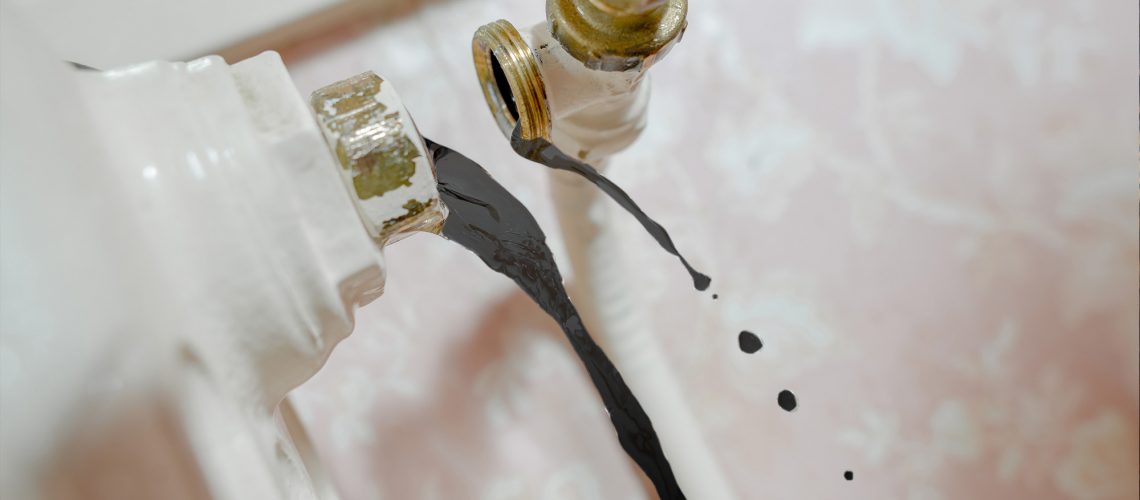Sludge in the radiators is a hidden central heating killer that is lurking in many systems across the country. Have you ever experienced feeling cold in a room even though the heating is on? Why do the radiators feel hot to touch when you run your hand along the top, yet little heat actually radiates? Well, potentially there is bad news.
Sludge: the central heating killer
There is nothing more damning as a gas engineer than to see thick sludge in a customer’s radiators. A serious problem, where there is no quick-fix, ends up being a time-consuming and sometimes expensive problem to repair. Sludge is corrosive, it can build up very quickly and can restrict and block pipes, components and radiators. Plus it can hit the wallet hard in more ways than one.
What is Sludge?
It is not too surprising that a central heating system can produce sludge when you consider what it is. The sludge is a result of a chemical reaction between the water in the central heating system and the steel in the radiators. Tiny particles of rust, known as iron oxide, form within the system which settles in the bottom of the radiators. When the heating system is switched off the rust particles clump together and restrict the pathway around the radiator. In severe cases, pathways become completely blocked. This is easy to diagnose. When the heating is on, check the top of the radiator. It will be hot to touch, but the centre bottom of the radiator will feel cold.
So why does it affect some systems and not others?
Prevention is always better than cure. It begins with the installation of a new system. The system will need commissioning. A full system flush out must be carried out. We strongly advise the installation of a filter (click here for more information on filters).
Build-up can occur when a heating system isn’t used for a long period and the system water continues to react with the steel radiators. This causes air bubbles to appear in the system, which is why radiators would often need bleeding. If your system is left for long periods without any use, it may be worth checking.
The ‘air’ in the system, however, these bubbles contain a clue: hydrogen.
Years ago, there was a test you could perform to check to see if hydrogen was present. Bleeding a radiator whilst holding a bottle upside down just above the bleed point. As hydrogen is lighter than air, it would fill the bottle. To prove it was hydrogen, simply cover the bottle opening once bleeding had finished, turn the bottle over, light a match, and offer it up to the bottle! A ‘pop’ of burnt hydrogen would appear!! This would indicate that the system water was reacting with something to release the hydrogen particles. The iron oxide is the result and thus prove the system was corrosive.
How can I find out if I have sludge in the radiators?
Fortunately, a simple inspection of the condition of the central heating water can determine what sort of action is required. In most cases, there will be small deposits building up in the bottom of the radiators. This build-up can be controlled with the correct water treatment, such as introducing a chemical inhibitor to the system. The inhibitor neutralises the corrosive effect that the water carries, therefore slowing down the build-up process. When systems are circulating, the water is moving the particles of iron oxide around the system.
How does it affect my central heating?
We’ve spoken about the problem this causes the radiator, but there are other components within the heating system that can be harmed:
- Local to the radiators are the valves, which in most cases will be thermostatic (TRV). The mechanism inside the TRV can seize up with iron oxide, whilst the corrosive element can cause them to leak.
- This issue also affects mechanical valves elsewhere in the system, particularly those that control the flow to heating and hot water components.
- The boiler has a pathway through it that can become restricted or blocked, resulting in a drop in efficiency and performance.
- Finally, and probably worst affected of all, is the circulating pump. Pumps are notorious for breaking down when a system suffers from iron oxide. The pump has an electric motor that moves the water. Iron oxide is attracted to the magnets inside the pump motor which leads to inefficiency and ultimately failure.
This is a common occurrence in many central heating systems across the country. Read this blog on Powerflushing as the way to combat this central heating killer. Contact us here for more advice or a quote.

